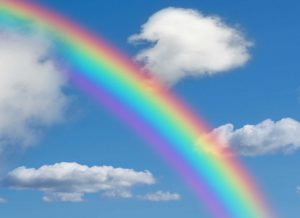Editors’ Note: One of the most well known stories in the Torah is that of Noach’s Ark. Yet too often, we fail to look behind the societal narratives this story. Today, Tzafon’s Rachel Schmidt gives us some insightful on the Parsha of the week, Parshat Noach.
Hello USY!
This week’s parsha is the second in Bereshit, Parshat Noach. This is a fairly well known Parsha, as it includes both the story of Noach’s Ark and the Tower of Bavel. However, in between these two events, the Parsha tells us more about Noach’s life after coming out of the ark. Admittedly, the whole process of Hashem destroying the world must have been pretty strange for Noach, and we get to see more of his thought process after the world has been rebuilt. Hashem commands Noach and his family to “be fruitful and multiply,” but understandably, Noach has some concerns about this. What if the world gets destroyed again? What is the point of having offspring if they and their descendants will just be wiped off the earth if they turn to evil?
It’s a fair question to ask, and Hashem seems to understand Noach’s fears, because as we see in the Parsha, Hashem then affirms his covenant with Noach that he will not destroy the world again as Noach has just seen him do. Specifically, Hashem says:
וַֽהֲקִֽמֹתִ֤י אֶת־בְּרִיתִי֙ אִתְּכֶ֔ם וְלֹֽא־יִכָּרֵ֧ת כָּל־בָּשָׂ֛ר ע֖וֹד מִמֵּ֣י הַמַּבּ֑וּל וְלֹא־יִֽהְיֶ֥ה ע֛וֹד מַבּ֖וּל לְשַׁחֵ֥ת הָאָֽרֶץ:
This roughly translates to: “never again will any flesh be wiped out by the floodwaters, and there will never again be a flood to destroy the earth.” This is the moment when Hashem creates the rainbow as a sign of this covenant, and the agreement between Hashem and Noach is sealed. Noach’s fears are allayed, and he does indeed have descendants, who are detailed later on.
 The fact that Hashem gives Noach proof of the promise is an interesting one, because Hashem does not frequently make covenants with people. This is something that we sometimes have to accept in religion; that there are certain things we have to take on faith and trust in Hashem despite our natural desire for proof of promises. By creating the rainbow as proof of the agreement with Noach, Hashem puts Noach in company with people like Moses and Abraham, who had the merits to receive such covenants.
The fact that Hashem gives Noach proof of the promise is an interesting one, because Hashem does not frequently make covenants with people. This is something that we sometimes have to accept in religion; that there are certain things we have to take on faith and trust in Hashem despite our natural desire for proof of promises. By creating the rainbow as proof of the agreement with Noach, Hashem puts Noach in company with people like Moses and Abraham, who had the merits to receive such covenants.
I don’t think anyone would argue that Moses and Abraham were righteous people full of merit, but there is actually a debate as to how righteous Noach was. The parsha opens with the statement that Noach was “righteous among his generation,” which raises the question of whether Noach was righteous only among sinners, or if he was truly a righteous person. However, Hashem’s decision to create the rainbow for Noach makes it clear that Noach was an extremely righteous man, regardless of his peers, and his connection with Moses and Abraham further supports that.
Noach actually has a second, but no less important, connection to Abraham. As you hear the Torah read this Shabbat, listen for the long lists of names; the portion goes through both Noach’s descendents and then specifically his son Shem’s descendants. This might seem just like a long list, but it is actually really important, because at the very end of Noach we learn that a descendant of Shem is Terach, Abraham’s father. From this we can see the direct link from Noach to the beginnings of Judaism. Just as all of us today living as Jews represent Hashem’s promise to Abraham that his descendents will be numerous like the stars, we also represent Abraham’s connection to Noach and Noach’s covenant with Hashem. We know Hashem will never again destroy the world as he did, he will be merciful and forgiving, and in times of darkness, he will bring forth a rainbow of hope. Shabbat Shalom!
Rachel Schmidt is a junior from Tzafon USY. She is a proud member of Shalom HaTzafon in Niskayuna, New York. She is currently serving as regional Religion Education Vice President.